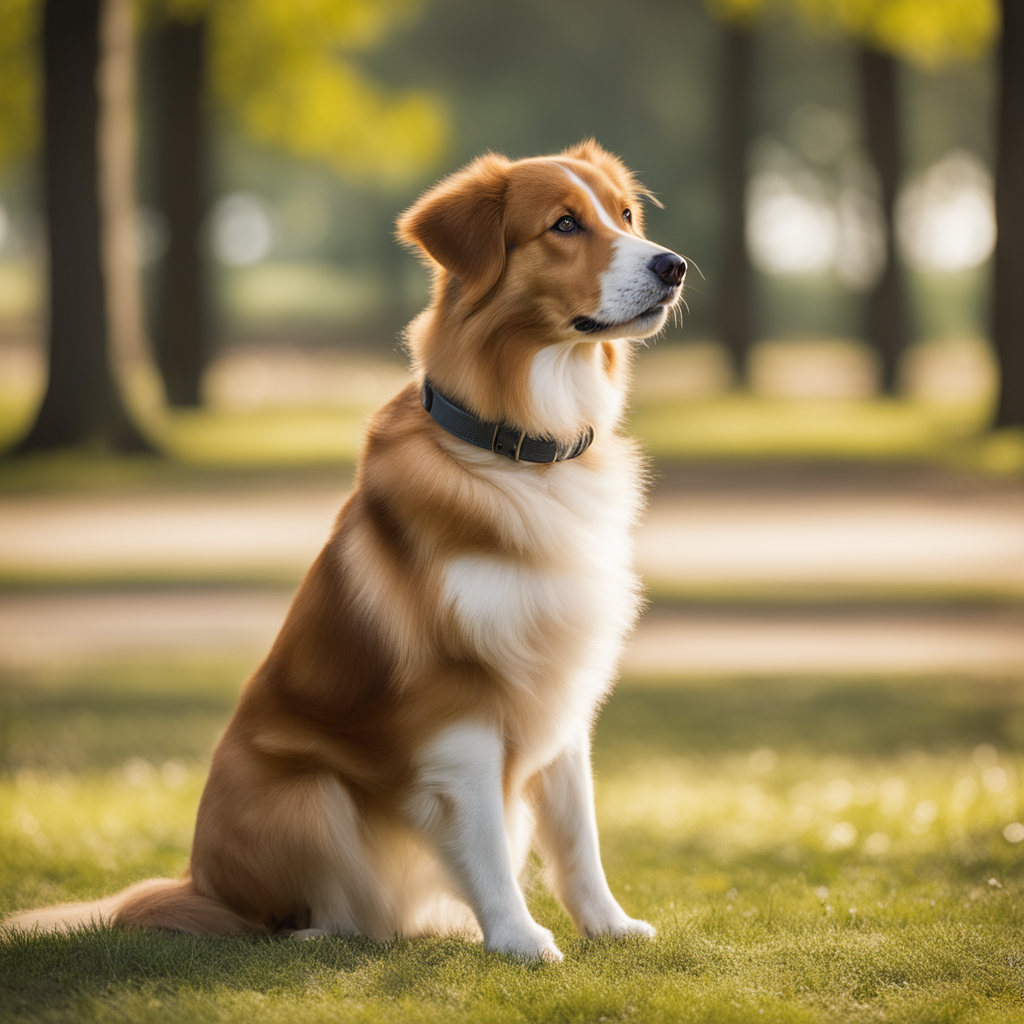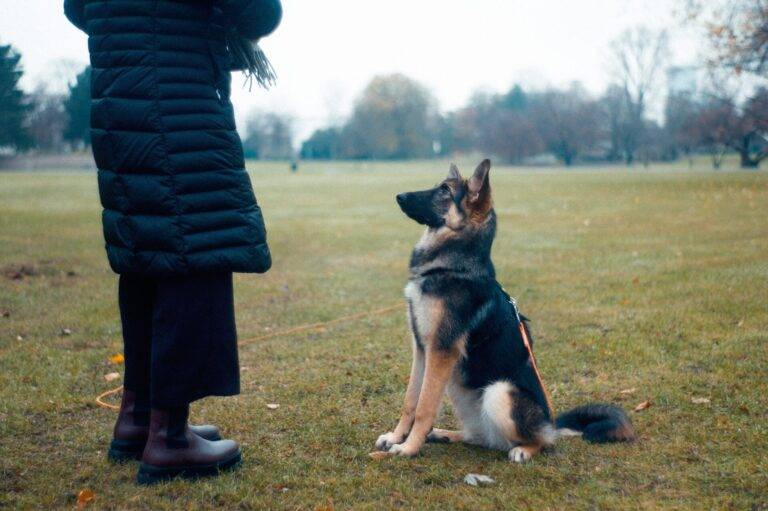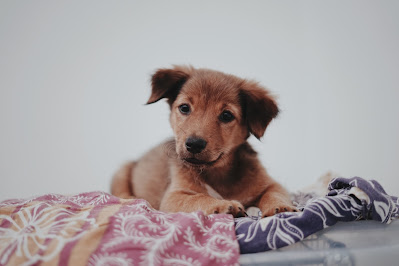Highly Effective How To Train Your Dog

How To Train Your Dog: Welcome to our expert guide on how to train your dog! Whether you have a new puppy or an older furry friend, training is an essential aspect of ownership. Not only does it ensure your dog is well-behaved, but it also strengthens the bond between you and your pet. In this section, we will provide you with tips and techniques to help you train your dog effectively. So, let’s dive into the world of dog training and make sure your furry companion is happy, healthy, and obedient.
Firstly, it’s important to note that every dog is unique. Therefore, it’s essential to customize your training approach to suit your dog’s individual needs and personality. However, there are some basic training principles that apply to all dogs. In the following sections, we will explore these principles and provide you with a comprehensive guide on how to train your dog. So, get ready to learn everything you need to know about dog training, from understanding your dog’s behavior to teaching advanced obedience techniques.
Train your dog for success with our expert guidance, and make sure your furry companion is a well-behaved, happy, and healthy dog!
Understanding Your Dog’s Behavior
Before diving into dog training techniques, it’s important to understand the behavior of your furry friend to form a strong bond with them. Dogs are intelligent creatures capable of expressing a wide array of emotions through their body language and vocalizations.
One important aspect of dog behavior is their body language. Understanding your dog’s body language is critical to improving your communication with them. This includes recognizing signs of fear, excitement, playfulness, aggression, and more. For instance, a wagging tail can indicate happiness, but a stiff tail and raised hackles can indicate aggression. By paying attention to your dog’s body language, you can adjust your behavior and training methods accordingly.
Another crucial aspect of dog behavior is their vocalizations. From barking to growling, dogs express themselves vocally according to how they are feeling. Learning to recognize and differentiate between your dog’s different vocalizations is crucial to understanding their behavior. For example, a dog may growl when they are afraid or feeling defensive, but a playful growl can indicate excitement.
It’s also essential to know that dogs have social hierarchies and may exhibit behaviors that reflect this. Some dogs may exhibit dominant or submissive behavior, and it’s important to understand how this may impact their behavior during training and interactions with other dogs and people.
Training Tips for Understanding Your Dog’s Behavior
- Pay attention to your dog’s body language to understand their emotions and needs.
- Learn to differentiate between your dog’s different vocalizations to understand their emotional state.
- Recognize and respect your dog’s social hierarchy to facilitate positive interactions with other dogs and people.
- Observe your dog’s behavior in different situations and environments to gain a better understanding of their personality and behavior patterns.
By understanding your dog’s behavior, you can customize your training approach to suit their individual needs and personality. This will make training more effective and help you form a deeper bond with your furry friend. Remember, every dog is unique, and understanding their behavior is the key to successful training.
Setting Training Goals
Before starting any dog training, it is essential to set clear training goals. A well-defined goal helps you to plan effectively and track progress. You can set both short-term and long-term goals in your dog training plan.
Begin by defining what you want your dog to learn. Do you want to teach your dog basic commands, leash training, or more advanced obedience training? Consider your dog’s age, temperament, and any behavioral issues that need addressing.
Once you have defined your goals, create a structured dog training plan. Break down each goal into smaller, achievable tasks, and prioritize them based on your dog’s needs. You can also set timelines to track your progress and modify your plan as needed.
Consistency is essential when training your dog. Ensure that everyone in your household is on board with your training plan and follow the same rules and commands to avoid confusion. Remember that each dog is unique, so tailor your training plan to suit your dog’s personality and individual needs.
Positive Reinforcement Training
If you want to train your dog effectively, positive reinforcement is the way to go. This method of training uses rewards, such as treats, praise, or playtime, to encourage and reinforce desirable behaviors. Positive reinforcement training is based on the idea that dogs will repeat behaviors that result in positive outcomes while avoiding behaviors that do not.
One of the advantages of positive reinforcement is that it is a gentle and humane approach to training. By using rewards instead of punishment, you can build a strong, trusting relationship with your dog. Positive reinforcement training also tends to be more effective than punishment-based training, as it encourages your dog to actively participate in the training process.
How to Use Positive Reinforcement
When using positive reinforcement, timing is everything. You must reward your dog immediately after they perform the desired behavior, so they can make a clear connection between the behavior and the reward. The reward should also be meaningful to your dog, so they are motivated to repeat the behavior in the future.
Start by identifying the behaviors you want to encourage in your dog, such as sitting or coming when called. Then, choose a reward that your dog loves, such as a small treat or toy. Whenever your dog performs the desired behavior, immediately reward them with the treat or toy, along with plenty of praise and affection.
Gradually, you can start to phase out the rewards and replace them with verbal praise and affection. However, it’s important to continue to reward your dog intermittently to keep them motivated and reinforce the behavior.
Benefits of Positive Reinforcement
Positive reinforcement training has many benefits. It is a kind and gentle approach to training which builds a positive relationship between you and your dog. Dogs trained with positive reinforcement are more likely to be well-behaved and obedient, as they enjoy the training process and want to please their owner. Positive reinforcement training can also be used to address behavioral issues, such as separation anxiety or aggression, by reinforcing alternative behaviors that are more desirable.
In summary, positive reinforcement training is an effective and humane way to train your dog. By rewarding desirable behaviors, you can build a strong, trusting bond with your furry friend and enjoy a happy, well-behaved companion.
Basic Training Commands
Teaching your dog basic commands is essential for obedience training and creating a well-behaved pet. These commands include sit, stay, come, and heel and are the foundation for more advanced training techniques.
Start by focusing on one command at a time, making sure your dog has mastered it before moving on to the next. Repetition and consistency are keys to successful training.
When teaching a command, use positive reinforcement techniques, rewarding your dog with treats or praise when they follow the command correctly. Avoid using punishment or negative reinforcement, as this can lead to fear or aggression in your dog.
Here are step-by-step instructions for teaching the basic commands:
- Sit: Hold a treat close to your dog’s nose and raise it slowly, causing their head to follow the treat and their bottom to lower. Once they are in a sitting position, say “sit” and give them the treat and praise.
- Stay: Start with your dog in a sitting position. Hold your hand up in front of their face and say “Stay”. Take a step back and wait a few seconds before returning to give them a treat and praise. Gradually increase the distance and duration of the stay.
- Come: Put a long leash on your dog and let them wander a short distance away. Call them by name and say “Come”, gently tugging on the leash if necessary. When they come to you, give them a treat and praise.
- Heel: Start with your dog on a leash. Hold the leash in your left hand and hold a treat in your right hand near your left leg. Walk forward, saying “heel” and encouraging them to stay by your left side with the treat. If they move too far ahead or behind, gently guide them back to your side with the leash and reward them when they stay in the proper position.
Leash Training and Walking Etiquette
Walking your dog is a great way to bond and get some exercise. However, if your dog isn’t properly leash trained, it can be a chaotic and unpleasant experience. Here are some tips for leash training your dog:
- Choose the right leash: A leash that is too short or too long can make it difficult to control your dog. Choose a leash that is 6 feet long, made of sturdy material, and comfortable for you to hold.
- Get your dog used to the collar: Before attaching the leash, let your dog get used to wearing the collar or harness. Give your dog treats and praise while they wear the collar so they associate it with positive experiences.
- Start indoors: Begin by practicing leash training indoors or in a quiet outdoor area. Encourage your dog to walk beside you with treats and praise. Avoid pulling on the leash or allowing your dog to pull you.
- Slowly increase distance and distractions: As your dog becomes more comfortable with walking on a leash, gradually increase the distance you walk and add in distractions such as other people or dogs. Keep treats and praise handy to reward good behavior.
Walking Etiquette
Proper walking etiquette is important for the safety and enjoyment of both you and your dog. Here are some tips for teaching your dog walking etiquette:
- Teach your dog to walk politely: Encourage your dog to walk beside you without pulling. Use treats and praise to reward good behavior.
- Allow for sniffing breaks: Dogs love to smell new scents, so allow for sniffing breaks during your walks. However, set boundaries and encourage your dog to return to walking beside you when it’s time to continue the walk.
- Pick up after your dog: Always carry poop bags with you and clean up after your dog. It’s important to be a responsible dog owner and keep public spaces clean.
- Be aware of your surroundings. Keep an eye out for potential hazards such as other dogs, people, or cars. Ensure your dog is always under control, and avoid any dangerous situations.
Potty Training
Potty training is a fundamental aspect of dog ownership and requires patience and consistency. Here are some tips to successfully potty train your furry friend:
- Establish a routine: Take your dog out at the same times every day, such as after meals or naps. This will help them learn when it’s time to go potty.
- Use positive reinforcement: When your dog goes potty outside, praise them and offer a treat. This will encourage them to repeat the desired behavior.
- Supervise your dog: Keep a close eye on your dog and take them outside immediately if they show signs of needing to go potty, such as sniffing or circling.
- Limit access: During the potty training process, limit your dog’s access to the house by using a crate or baby gate. This will help prevent accidents inside.
- Address accidents calmly: If your dog has an accident inside, clean it up without scolding your dog. Punishing them for accidents can confuse them and make the training process longer.
Remember, every dog is different, and potty training may take longer for some. Be patient, and consistent, and celebrate each success along the way.
Behavior Correction
Training your dog is not just about teaching them new commands, but also about correcting unwanted behaviors. Addressing problem behaviors is crucial to ensure a peaceful living environment for both you and your furry friend. Here are some effective behavior correction techniques:
Positive Reinforcement
The same positive reinforcement techniques used to teach new commands can also be applied to correcting unwanted behaviors. Rather than punishing your dog for bad behavior, focus on rewarding them for good behavior. For example, if your dog jumps on visitors, teach them the “sit” command and reward them for sitting instead of jumping.
Ignore Unwanted Behaviors
Sometimes, negative behaviors are reinforced unintentionally. For example, if your dog barks excessively for attention, giving them attention when they bark will only reinforce the behavior. Instead, ignore the behavior and only reward them when they are calm and quiet.
Redirecting Attention
If your dog is engaging in an unwanted behavior, redirect their attention to a positive behavior instead. For example, if they are chewing on furniture, give them a chew toy instead and reward them for chewing on the toy. This way, they will associate the positive behavior with the reward rather than the unwanted behavior.
Consistency
Consistency is key to correcting unwanted behavior. Everyone in your household should be on the same page when it comes to training and correcting your dog’s behavior. If you are inconsistent, your dog may become confused and revert back to the unwanted behavior.
- Tip: Keep a training journal to track progress and identify areas that need improvement.
- Tip: Seek professional help if the behavior is severe or if you are having trouble correcting it on your own.
Socialization and Training in Different Environments
Socialization is a crucial part of a dog’s training, as it helps your furry friend develop social skills and adapt to various environments. Socialization should begin when your dog is a puppy, and it should continue throughout their life.
To socialize your dog, expose them to different people, dogs, and environments. Take your dog for walks in your neighborhood and introduce them to your neighbors and their dogs. Take your dog to the park or a pet store and let them interact with other dogs. Make sure to supervise your dog’s interactions and intervene if necessary.
It’s also important to train your dog to behave appropriately in different environments. For example, if you plan to take your dog to the beach, introduce them to the sand, water, and other beachgoers gradually. Teach your dog to walk on a leash and follow basic obedience commands in different environments.
Remember, socialization and training in different environments takes time and patience. It’s essential to expose your dog to different experiences gradually and to reinforce positive behaviors. With consistent training and socialization, your dog can learn to adapt to any situation with ease.
Advanced Training Techniques
Once your dog has mastered the basic commands, it’s time to move on to more advanced training techniques. These techniques will challenge your dog both mentally and physically, providing them with a sense of accomplishment and strengthening your bond.
Scent Work
Scent work is a fun and challenging activity for dogs that involves using their sense of smell to locate specific scents. It can be a great way to mentally stimulate your dog and build their focus.
- Start by introducing your dog to the scent you want them to search for. This could be a specific oil or an object with a particular scent.
- Hide the scent in a safe, enclosed area and encourage your dog to find it using their nose.
- As your dog becomes more proficient, you can increase the difficulty by hiding the scent in more challenging locations or using multiple scents.
Agility Training
Agility training involves teaching your dog to navigate an obstacle course, including jumps, tunnels, and weave poles. It requires a combination of physical and mental skills, making it a great way to challenge your dog’s abilities.
- Start by introducing each obstacle one at a time, using treats and praise to encourage your dog to complete each one.
- As your dog becomes more confident, you can gradually increase the difficulty by adding more obstacles and varying the course.
- Always prioritize safety during agility training, ensuring that the equipment is sturdy and secure and that your dog is fully warmed up before beginning.
Advanced Obedience
Advanced obedience training involves teaching your dog to perform more complex commands and behaviors, such as longer stays and more intricate tricks.
- Start by building on the basic commands your dog has already learned, gradually increasing the duration and difficulty of each one.
- Use positive reinforcement techniques to encourage your dog to perform more challenging behaviors, such as shaping and capturing.
- Remember to keep training sessions short and positive, avoiding frustration or punishment if your dog struggles with a particular behavior.
Advanced training techniques can be a great way to continue building your bond with your dog and providing them with mental and physical stimulation. With patience and consistency, your dog can master even the most challenging of tasks.
Training for Specific Situations
While basic obedience training lays the foundation for a well-behaved dog, there are various situations that may require specialized training. By providing your dog with specialized training, you can prepare them for a variety of scenarios and ensure they behave appropriately.
Preparing Your Dog for Vet Visits
Many dogs experience fear or anxiety when visiting the veterinarian. However, visits to the vet are essential for maintaining your dog’s health. Specialized training can help ease your dog’s anxiety and make vet visits less stressful for both of you. Start by acclimating your dog to the vet’s office environment by bringing them in for brief visits that do not involve medical procedures. Reward them for calm behavior and gradually increase the duration of each visit. You can also practice handling exercises at home, touching your dog’s paws, ears, and mouth, and rewarding calm behavior.
Training for Proper Behavior Around Children
If you have young children, it’s vital to train your dog to behave appropriately around them. Teach your dog to play gently, avoid jumping on children, and respect their personal space. You can start by using positive reinforcement to reward calm behavior around children and gradually increasing the level of interaction. Supervision is also essential, especially during the early stages of the training process. Always ensure that children and dogs are playing in a safe environment and that children are never left alone with a dog.
Training for Service or Assistance Work
Some dogs are specifically bred and trained for service or assistance work, such as guiding the visually impaired or detecting seizures. If you plan on training your dog for service or assistance work, it’s crucial to ensure they receive the proper training. You can start by working with a professional trainer experienced in service dog training. Depending on the dog’s intended role, the training may be extensive and may require specialized skills such as scent detection or mobility assistance. Always remember that service and assistance dogs play a crucial role in the lives of their owners and must be trained to the highest standards.
Training for Agility Competitions
Agility competitions are a popular activity for dogs and their owners. They involve a series of obstacles such as jumps, tunnels, and weave poles that the dog must complete in a set amount of time. If you plan on training your dog for agility competitions, you should start by building a strong foundation in basic obedience and gradually introducing the agility obstacles. Ensure that your dog is physically fit, and provide plenty of positive reinforcement to keep them motivated. It’s crucial to train under the guidance of a professional trainer experienced in agility training to prevent injury and ensure that your dog is competing safely.
Training for Therapy Work
Therapy dogs provide emotional support to people in hospitals, nursing homes, and other settings. They undergo specialized training to ensure they are well-behaved and comfortable in a variety of environments. If you plan on training your dog for therapy work, you should start by building a strong foundation in basic obedience and socialization. Therapy dogs must be friendly, calm, and able to handle different types of people and environments. You can work with a professional trainer experienced in therapy dog training to ensure that your dog is trained to the highest standards and ready to provide comfort and support to those in need.
- Remember, training for specific situations requires patience, dedication, and specialized knowledge.
- Work with a professional trainer if necessary to ensure that your dog is trained to the highest standards and ready to face any scenario.
- By providing your dog with specialized training, you can ensure they are well-prepared for any situation and can be a well-behaved companion wherever you go.
Training for Behavioral Issues
While most dogs are well-behaved, some may exhibit problematic behaviors that require specialized training. Common behavioral issues include separation anxiety, aggression, and fearfulness. Fortunately, with the right training techniques, these issues can be effectively addressed.
Behavior Modification
Behavior modification is a training technique that involves changing a dog’s behavior by reinforcing desired behaviors while ignoring or redirecting unwanted ones. This technique can be particularly useful in addressing issues such as aggression, fearfulness, and compulsive behaviors.
A key aspect of behavior modification is identifying the root cause of the problematic behavior. For example, a dog may exhibit aggression due to fear or anxiety. By addressing the underlying cause, such as providing a safe and calm environment or gradually exposing the dog to the source of its fear, the aggressive behavior can be reduced or eliminated.
Seeking Professional Help
In some cases, behavioral issues may require the assistance of a professional dog trainer or behaviorist. These experts can provide specialized training techniques that address the specific needs of your dog, as well as guidance on managing and preventing future issues.
When seeking professional help, it’s important to choose a trainer or behaviorist who uses positive reinforcement techniques and has experience in addressing the specific behavioral issue your dog is exhibiting.
Training for Success
Training for behavioral issues can be a challenging and time-consuming process, but with patience and consistency, it is possible to achieve success. It’s important to remain calm and avoid punishing or scolding your dog, as this can exacerbate the issue.
Consistency is also crucial, as inconsistent training can confuse your dog and make the issue worse. Establishing a structured training routine and sticking to it can help reinforce desired behaviors and reduce unwanted ones.
Remember, every dog is unique, and training for behavioral issues may require a customized approach that considers your dog’s individual needs and personality. By remaining patient, consistent, and seeking professional help when necessary, you can successfully address behavioral issues and enjoy a well-behaved, happy dog.
Training Troubleshooting and Tips for Success
Training your dog can be a challenging endeavor, but it’s important to remain patient, consistent, and adaptable throughout the journey. Here are some troubleshooting tips and success strategies to help you and your furry friend achieve your training goals:
Stay Positive
Positive reinforcement is the cornerstone of effective dog training. Always reward your dog for good behavior and avoid punishing or scolding them for mistakes. Use treats, verbal praise, and playtime to reinforce obedience and build trust with your pet.
Be Consistent
Dogs thrive on routine and consistency. Establish a set training schedule and stick to it, keeping training sessions short and frequent. Use the same commands and rewards consistently to avoid confusion and reinforce learning.
Stay Calm
Training your dog can be frustrating at times, but it’s essential to remain calm and patient. Dogs can sense your emotions, and getting angry or upset can hinder their learning and damage your relationship. Take breaks as needed and approach training with a positive attitude.
Address Obstacles
If you encounter obstacles or setbacks during training, don’t give up. Instead, analyze the issue and adjust your approach accordingly. Whether it’s revising your training plan, seeking professional help, or addressing underlying health or behavioral issues, there is always a solution.
Get Creative
Dogs thrive on mental stimulation and enjoy variety in their training. Mix up your training routine with new commands, games, and challenges to keep your dog engaged and motivated. Incorporate toys, agility equipment, and other tools to add fun and excitement to your training sessions.
Celebrate Success
Finally, celebrate your dog’s training successes and acknowledge their progress. Whether it’s mastering a new command, overcoming a fear, or simply showing improvement, take time to praise your pet and enjoy the journey together.
How To Train Your Dog Conclusion
In conclusion, training your dog can be a challenging but rewarding journey for both you and your furry friend. By understanding your dog’s behavior, setting clear training goals, and utilizing positive reinforcement techniques, you can establish a strong bond with your pet and enjoy a well-behaved, happy dog.
Remember, every dog is unique, so customize your training approach to suit your dog’s individual needs and personality. Whether you are dealing with basic obedience, behavioral issues, or specialized training, consistency and patience are key.
If you encounter any training obstacles along the way, don’t worry – troubleshooting tips and professional help are always available. With the right training approach and mindset, you can ensure a lifelong relationship of love and companionship with your furry friend. Happy training!
How To Train Your Dog FAQ
How do I start training my dog?
To start training your dog, it’s important to establish a positive and consistent training routine. Begin by teaching basic commands such as sit and stay, using reward-based methods. Gradually introduce more advanced commands and work on addressing any problem behaviors.
How long does it take to train a dog?
The time it takes to train a dog can vary depending on factors such as the dog’s age, breed, and individual temperament. Consistency and patience are key factors in successful training. Some dogs may learn quickly, while others may require more time and repetition.
Should I use punishment-based training methods?
It is generally recommended to use positive reinforcement-based training methods rather than punishment-based methods. Positive reinforcement focuses on rewarding desired behaviors, which promotes a positive learning experience for your dog. Punishment-based methods can be ineffective, cause fear or anxiety, and damage the bond between you and your dog.
Can I train an older dog?
Yes, you can train an older dog. While it may take longer for an older dog to learn new commands and behaviors compared to a young puppy, with patience and consistency, you can still achieve successful training outcomes. It’s important to tailor the training approach to your dog’s individual needs and abilities.
How often should I train my dog?
Consistency is key to successful dog training. Aim to train your dog for short sessions of 10-15 minutes, several times a day. This will help keep your dog engaged and prevent them from becoming bored or overwhelmed. Regular, ongoing training is important for reinforcing learned behaviors and introducing new commands.
What if my dog is not responding to training?
If your dog is not responding to training, it could be due to various factors such as distractions, stress, or lack of motivation. Take a step back and assess the training environment. Ensure distractions are minimized and use higher-value rewards to increase motivation. If you’re still facing challenges, consider seeking guidance from a professional dog trainer.
Can I train my dog without professional help?
Yes, you can train your dog without professional help. Many dog owners successfully train their dogs using resources such as books, online tutorials, and obedience classes. However, if you’re facing specific challenges or struggling to achieve desired results, consulting a professional dog trainer can provide valuable guidance and support.
How do I potty train my dog?
Potty training involves establishing a routine, using positive reinforcement, and closely supervising your dog. Take your dog outside frequently, especially after meals or naps, and reward them with praise and treats when they are eliminated in the appropriate spot. Consistency and patience are important, as accidents may happen during the learning process.
How do I stop my dog from jumping on people?
To stop your dog from jumping on people, teach them an alternative behavior such as sitting or giving a paw. When your dog jumps, ignore the behavior and wait for them to offer the desired alternative behavior. Immediately reward and praise your dog when they engage in the desired behavior. Consistency and positive reinforcement will help your dog learn the appropriate greeting behavior.
How do I socialize my dog?
Socializing your dog involves exposing them to different people, animals, and environments in a positive and controlled manner. Start with calm and friendly interactions, gradually increasing the level of exposure. Encourage positive experiences through rewards and praise. Socialization is crucial for developing your dog’s confidence and ensuring they are comfortable in various situations.








